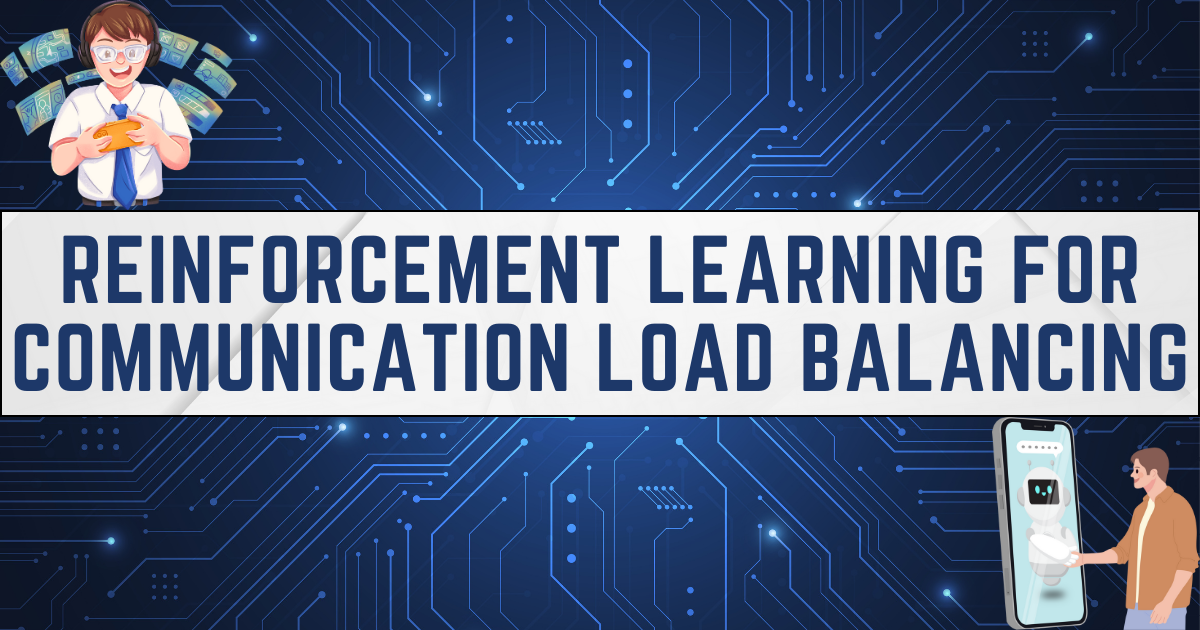Reinforcement Learning for Communication Load Balancing: Methods and Challenges. The amount of cellular communication network traffic has increased dramatically in recent years, and this growth has led to a demand for modified network performance. Communication load balancing aims to balance the load across accessible network resources and thus enhance the quality of service for network users. To learn more about reinforcement learning for communication load balancing, its methods, and its challenges, read the full article below.
Reinforcement Learning for Communication Load Balancing
The amount of cellular communication network traffic has increased dramatically in recent years, and this growth has led to a demand for modified network performance. Communication load balancing aims to balance the load across accessible network resources and thus enhance the quality of service for network users. Most current load balancing algorithms are manually designed and tuned rule-based methods where near-optimality is almost impossible to achieve. Moreover, rule-based methods are challenging to adapt to immediately changing traffic patterns in real-world environments.

With the high-speed construction of 4G and 5G networks, network traffic and services are expanding quickly, and the growth in networks such as data centers and wide area networks is limited by traditional network architectures. With the current development and approval of these technologies, the number of mobile users and high data-demanding mobile applications has also been increasing rapidly. The total global mobile data traffic, as per the reports of Ericsson (2022), was believed to reach 90 EB/month by the end of 2022 and to increase to around 115 EB/month by 2028. The number of mobile users also shows a major increase. In 2022 there were around 7.3 billion wireless data devices and it is believed that it will reach over 9.2 billion devices by 2028.
Methods of Reinforcement Learning for Communication Load Balancing
We will discuss the model-free RL, which is the predominant RL method used in the load balancing literature. This type of RL algorithm aims to directly output control actions based on the state, without making an explicit system dynamics model. The RL algorithms are divided into three parts: Q-learning, policy gradient methods, and actor-critic algorithms.
The methods of Reinforcement Learning (RL) are given below:
- Q-Learning: The Q-learning method is the foundation of the modern value-based algorithms where Q is learned by minimizing the Bellman error. Modern Q-learning algorithms represent the Q function as a deep neural network with parameters Θ. The pioneering Deep Q-Network (DNQ) enabled deep Q learning. In this work, two main techniques are introduced to stabilize the learning using deep neural networks as function approximators.
- Policy Gradient: Unlike value-based RL methods explained above, where the optimal policy is calculated greedily with respect to the Q-function, policy-based RL algorithms search for the optimal policy directly. The optimal policy is received by maximizing the agent’s expected cumulative discounts and rewards. This policy is often represented as a function approximator (e.g., a deep neural network) with learnable parameters ϕ.
- Actor-critic: Actor-critic methods are additional PG methods where the Qπϕ function is learned in addition to the policy. Hence, actor-critic methods often learn two models. The critic QΘπϕ parameterized by the parameters Θ approximates the state-action value function. Subsequently, the actor or the policy πϕ is updated based on the learned critic. Consequently, the actor-critic is not restricted to the state-action value function.
Challenges in Reinforcement Learning for Communication Load Balancing
There are many advantages of reinforcement learning for communication load balancing. However, there are also several challenges that deny the applicability of the LB solutions for real-world applications, such as data efficiency, the lack of suitable simulators for simulation-based training and evaluation, safety, and explainability.
- Data efficiency: Most deep reinforcement learning algorithms need a large number of interactions with the environment, i.e., more than one million interactions are often required to learn a reliable control policy. Data efficiency is one of the major challenges of bringing the RL-based solutions for real-world problems.
- Safety: Actions suggested by RL agents may bring an operating real-world system into some undesirable or even dangerous state. It involves exploration in the model training phase. The other safety challenge related to distributed drift when operating.
- Simulation: High simulator fidelity is usually linked with high computational cost and it can be very difficult to tune and verify the simulator. If the simulation is too slow, the training process may take weeks or even months.
